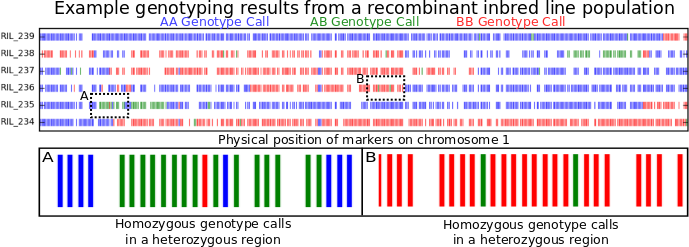A really nice thing about many crop plants is that through natural self pollination it is possible to create true breeding inbred lines. Inbred lines plants that are homozygous across all or nearly all of their genomes. If the same inbred plant is the used as the mother and father to produce new seeds, all those seeds will be genetically identical to the parent plant. Just like identical twins. And like identical twins, inbred lines make it possible to understand a LOT more about the interplay of genetics and environment since we have a chance to see how different or similar the characteristics of genetically identical individuals turn out to be.
(more…)December 29, 2021
March 26, 2017
Correcting genotyping errors when constructing genetic maps from genotyping by sequencing — GBS — data.
When doing anything even vaguely related to quantitative genetics I would chose more missing data over more genotyping errors any day of the week. There are lots of approaches to making missing data less of a pain. The most straightforward of these is called imputation. Imputation essentially means using the genetic markers where you do have information to guess what the most likely genotypes would be at the markers where you don’t have any direct information on what the genotype is. This is possible because of a phenomenon known as linkage disequilibrium or “LD.” Both imputation and LD deserve their own entire write ups and they are on the list of potential topics for when I have another slow Sunday afternoon. For now the only thing you have to know about them is that, when information on a specific genetic marker is missing, it is often possible to guess with fairly high accuracy what that missing information SHOULD be. But when the information on a specific genetic marker is WRONG… well it’s usually a bit more of a mess (but I think the software solutions for this are getting better! Details at the end of the post.)
